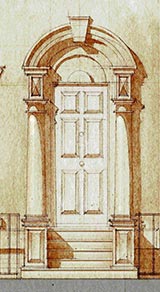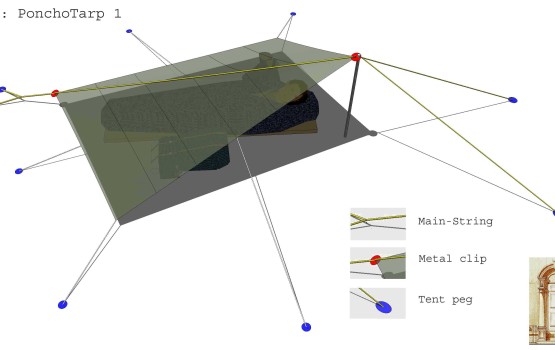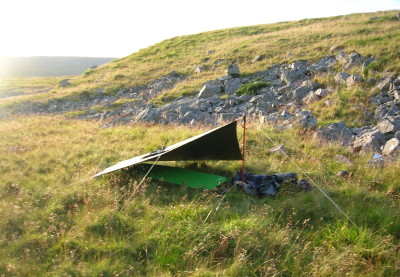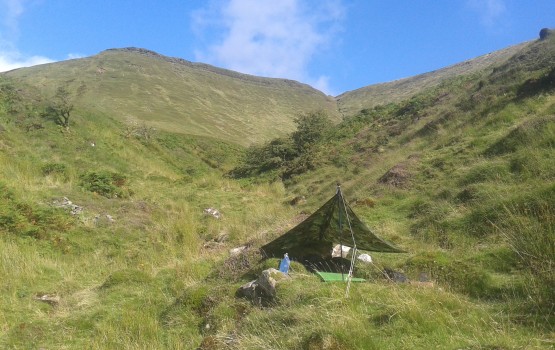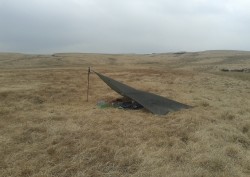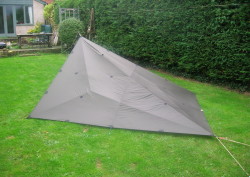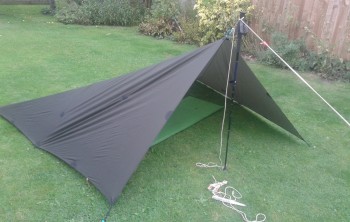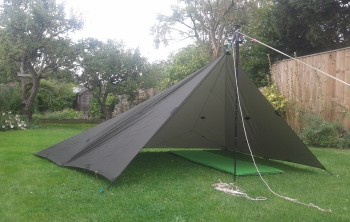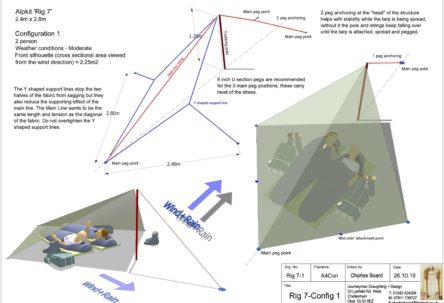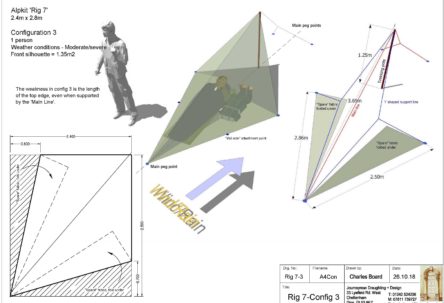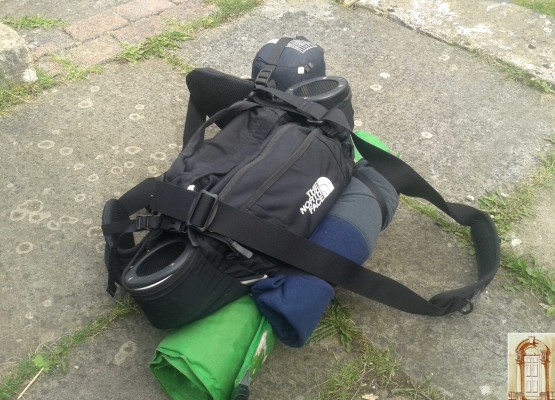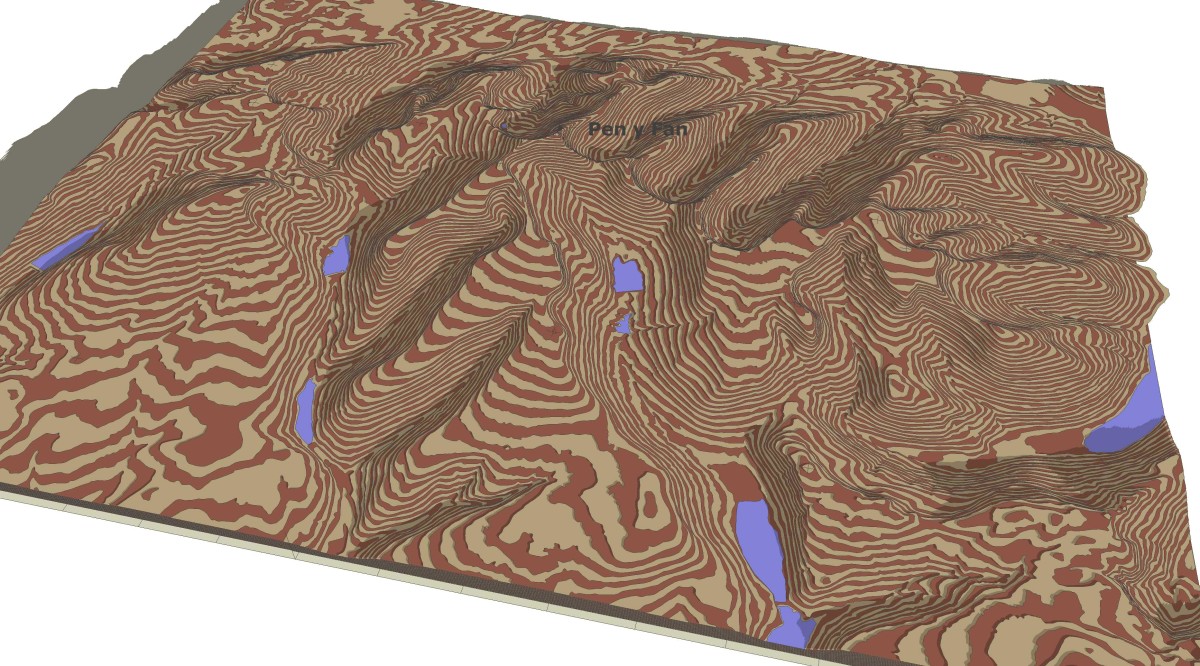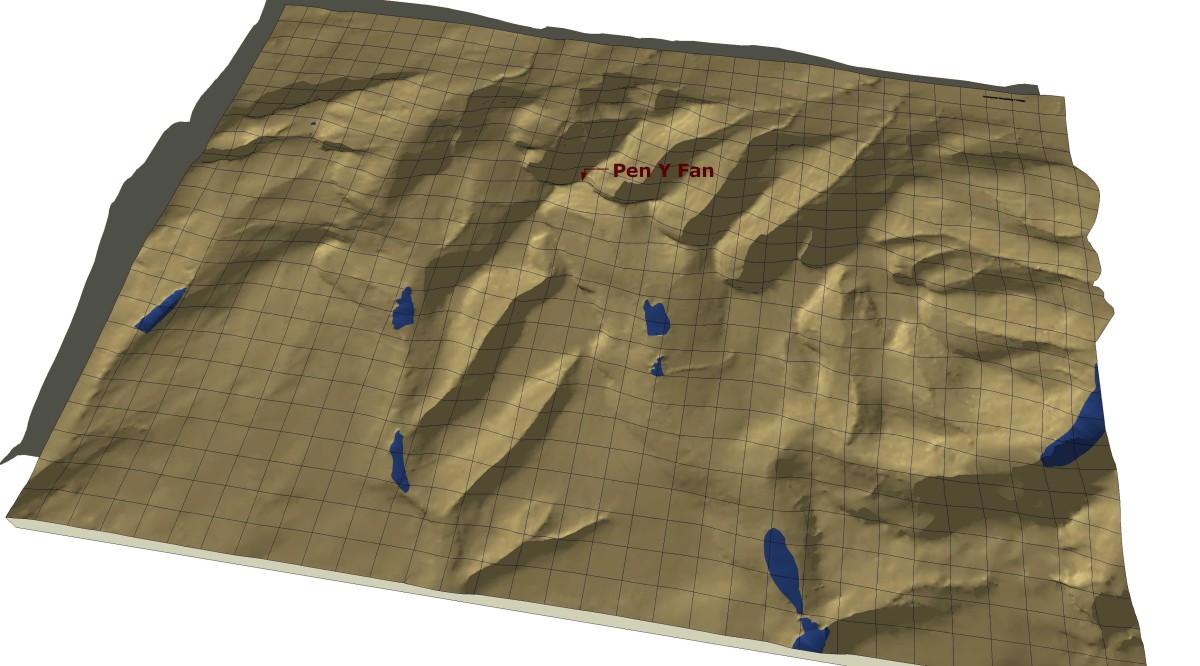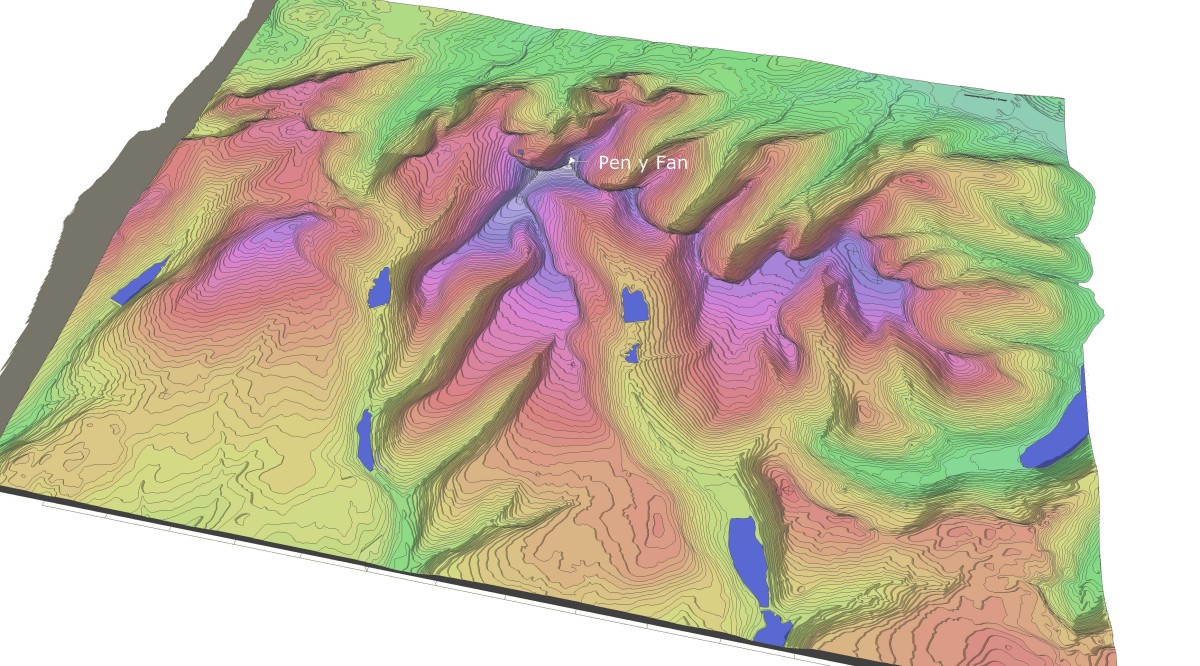The Moral of the Story
Camping under a tarp one snowy/rainy January night in the Brecons, I woke up at ?am to find that my sleeping bag was damp on the inside and I was shivering. This had never happened before, I thought about it for a moment and then stuffed everything into my rucksack any old how and got the snot out of there, back to my car. Moral; If things start to look iify, don’t hesitate, get the snot out of there, walking will keep you warm, (and always pack a compass) it’s only fun if you don’t have to phone Brecons Mountain Rescue (999) to save you.
Poncho-tarp – Configuration 1
A poncho is one option for wet-weather gear, and with a poncho you can make a tarpaulin shelter if you have with a trekking pole, guy-lines and tent pegs. The tarp is “formed” like an A4 page with a diagonal fold, the fold line being supported by a string from the top of the trekking pole (red spot) to a tent peg in the ground (red spot). This gives 3 corners of the tarp pegged to the ground and one corner elevated and attached to the top of the trekking pole. The low end of the tarp is pointed into the prevailing wind, leaving the opening in the lee of the shelter. Using the diagonal of the poncho in this way gives a usable length of shelter, (the majority of ponchos being only about 2.15m x 1.54m). The area sheltered by the tarp can be seen by the shadow cast in the drawn diagrams. This streamlined shape is also functional, with the low end containing your feet which don’t need a lot of space and the high end sheltering the arms , shoulders and head which need more. Some people advocate having two trekking poles to make a shelter like an “A frame” tent but this surely only lets wind and rain in at the foot end, and utilises only the long dimension of the poncho.
Large Tarp – Configuration 1
The pics below show an Alpkit “Rig 7″ tarp, (2.4m x 2.8m, 490g) in the same configuration described above, this is big enough for 2 people. Most tarps are wholly dependent for tension on the grip of tent-pegs in the ground because they have none of the bendy poles that gives shape to tents, independent of the tent pegs. I use 9” V-section pegs for the main points because so much of the Brecons are boggy and mossy and a peg needs extra length to get through to the decent holding ground. A tarp this size puts a lot of strain, vertically, on the trekking pole and I’ve had poles break more than once. (The higher up the hill you pitch your tarp, the greater the wind, obvious but true). Fig 2.5 shows (in red) the 3-armed strings with tensioners that support the triangular faces of the tarp, you can also see these in the fabric in Fig 2.1/2.2
Configuration 2
A larger tarp can be configured with the pole attached to the middle of a long side and the two halves of the long side bought forwards to form a partial pyramid shape to give an increased arc of protection.
Configuration 1 + 2
Configuration 2 gives a larger arc of protection, a larger area of fabric should give more protection, albeit probably for a single occupant. The poncho-tarps shown here are commercially available, and pretty pricey.
- 10 Litre “Northface” bum-bag.
- Army surplus poncho/tarp.
- Guy lines with tensioners, extra string.
- V-section tent pegs (6″ + 9″)
- Telescopic trekking pole as vertical member to tarp.
- Sleeping mat.
- 2-season down sleeping bag.
- Slot-together stainless steel wood-stove.
- Firelighters.
- 0.6 litre metal cooking-pot/cup with lid.
- Metal/plastic sporks.
- 2 litre “Source” collapsible water container
- Chlorine water purification tablets.
- Map and compass.
- Telephone/camera/compass + spare batteries
- Multi-tool
- 2 No. “Minirig” speakers, cables.
- Spare drawstring bags for wood fuel, pillow etc.
- Food, incl. chicken “Oxo” cubes.
- Toilet paper.
- Spare Rizlas, spare lighter.
- Extra fleece jumper
Ordnance Survey Opendata
Various types of 3D data e.g. contours, can be downloaded for free from the Ordnance Survey Opendata site
www.ordnancesurvey.co.uk/opendatadownload/products.html
This is available in .dwg or .dxf format. The models below show the contours at 10 metre intervals for 192 square kilometres centred around Pen y Fan in the Brecon Beacons. These models are available to download in Sketchup 8 format from 3D Warehouse
https://3dwarehouse.sketchup.com/?hl=en
just search under “Brecon Beacons”.

